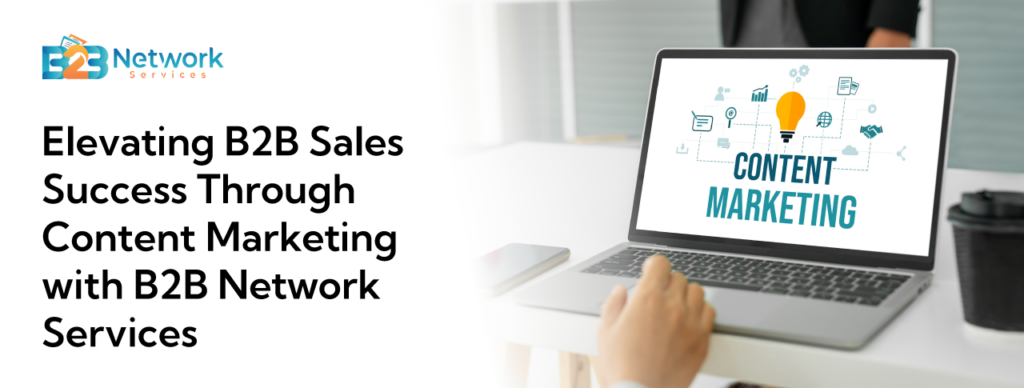B2B SaaS companies face unique challenges when it comes to marketing. One of the biggest hurdles is understanding how to implement Demand Generation and Lead Generation strategies effectively. These two approaches are crucial for business growth but are often confused or misunderstood. Mistakes in either of these strategies can lead to wasting valuable resources such as time and money. Additionally, if these strategies are not executed properly, they can result in missed opportunities to attract or retain new customers. In B2B SaaS or tech, the competition is tough, and acquiring new customers can be expensive. That’s why Demand and Lead Generation are vital. They help you stand out in a crowded market and convert potential customers into actual sales. However, achieving success in this area is more than just throwing money into marketing campaigns. It requires understanding the unique challenges of B2B SaaS marketing, such as identifying your target audience, selecting the proper marketing channels, and setting clear goals for each campaign. Making a mistake in any of these areas can set you back significantly. Therefore, it is crucial to have a solid understanding of both Demand and Lead Generation. In this blog, we’ll explore why Demand and Lead Generation are important and try to understand mistakes that even seasoned marketers need to pay attention to. We will also talk about identifying and mitigating potential risks and discuss why both of them are important. Common Pitfalls or Avoidable Mistakes in B2B Demand Gen & Lead Gen Every B2B SaaS and Tech Marketer Should Know! • Poor Targeting: Issue: In both tech and B2B SaaS industries, companies sometimes launch marketing campaigns without clearly understanding their target audience. It could mean not knowing the specific industries, job roles, or pain points that their potential customers have. Impact: Marketing campaigns with poor targeting can result in low engagement rates and high customer acquisition costs. It is because the message only resonates with the people who need your product or service. • Lack of Alignment Between Sales and Marketing: Issue: Sales and marketing teams often have different goals, KPIs, and customer definitions. This lack of alignment can lead to disjointed campaigns with inconsistent messaging and objectives. Impact: When these teams are not aligned, leads can get lost in transitioning from marketing to sales. This results in lower conversion rates and a longer sales cycle, affecting revenue and growth. • Ignoring Data and Analytics: Issue: Some companies either don’t set up proper tracking for their marketing campaigns or ignore the data they collect. It is especially problematic when trying to understand the ROI of different marketing channels. Impact: Ignoring data makes optimizing campaigns or understanding customer behavior nearly impossible. This lack of insight can lead to continued investment in ineffective strategies. • Overlooking Content Quality: Issue: The pressure to produce a high volume of content can lead to a compromise in quality. It is particularly detrimental in sectors like tech and B2B SaaS, where the audience seeks expert insights and in-depth information. Impact: Low-quality content can deter potential leads and damage your brand’s credibility. It can have a long-term effect on customer trust and conversion rates. • Failing to Nurture Leads: Issue: The nurturing process is often neglected once a lead is generated. Companies may not have a structured lead nurturing strategy, crucial in sectors with longer sales cycles like tech and B2B SaaS. Impact: Leads that need to be nurtured appropriately may lose interest or be swayed by competitors, leading to lost revenue opportunities. Identifying and Mitigating Potential Risks for B2B Demand Generation & Lead Generation for your B2B SaaS and Tech Companies You can optimize your Demand and Lead Generation efforts by proactively identifying and implementing strategies to mitigate these risks. It will lead to more effective campaigns, higher conversion rates, and more significant ROI for your B2B SaaS or tech company. Low-Quality Leads: Attracting low-quality leads is a common pitfall in Lead Generation efforts. These leads may never convert into paying customers, either because they were not the right fit for your product or service to begin with or because they were not sufficiently engaged. To mitigate this risk, it’s crucial to refine your targeting criteria. Utilize lead scoring systems that prioritize leads based on their likelihood to convert, ensuring that your sales team focuses their efforts most effectively. Lack of Alignment Between Sales and Marketing: Demand and Lead Generation campaigns can become costly, leading to high Customer Acquisition Costs (CAC). When the cost to acquire a new customer exceeds the value that the customer brings (Customer Lifetime Value or CLV), your marketing efforts become unsustainable. To manage this, monitor your CAC meticulously and compare it against the CLV to ensure you’re achieving a positive return on investment. Regularly review and optimize your campaigns to improve cost-efficiency. Message Mismatch: Inconsistent or unclear messaging across different sales funnel stages can create confusion among potential customers. It can adversely affect both Demand Generation, which aims to generate initial interest, and Lead Generation, which seeks to convert that interest into sales. To mitigate this risk, ensure your messaging is consistent across all channels and customer touchpoints. Employ A/B testing to identify which messages resonate most with your audience and optimize accordingly. Overemphasis on Top-of-Funnel Activities: A common mistake is to focus too much on top-of-the-funnel Demand Generation activities, neglecting Lead Generation efforts that convert interest into sales. While creating awareness and interest is important, it’s equally crucial to have strategies in place to move potential customers down the funnel toward conversion. To balance your efforts, use funnel metrics to identify bottlenecks and reallocate resources to stages that need more attention. Inadequate Lead Nurturing: In B2B SaaS and tech industries, where sales cycles can be long and complex, failing to nurture leads effectively can result in lost opportunities. Leads that are not nurtured may lose interest, forget about your product, or turn to competitors. To mitigate this, develop a comprehensive lead nurturing strategy with multiple touchpoints, such as follow-up emails, educational content, and personalized offers,





